Top 15 Best Crime Movies of All Time
We're living in a golden age of true crime content, from documentaries to podcasts to TV shows and books. Which means, no surprise, that the murder mystery film is also seeing a resurgence in popularity. The classic genre has had some major standouts over the last several decades, and the typical whodunit setup—several people in a house, one dies, a detective has to solve the crime—has expanded to include truly unique settings and stories.
Take a look at the article below for 15 best crime movies of all time that you can stream right now and get your detective skills to work.
1. 'Seven' (1995)
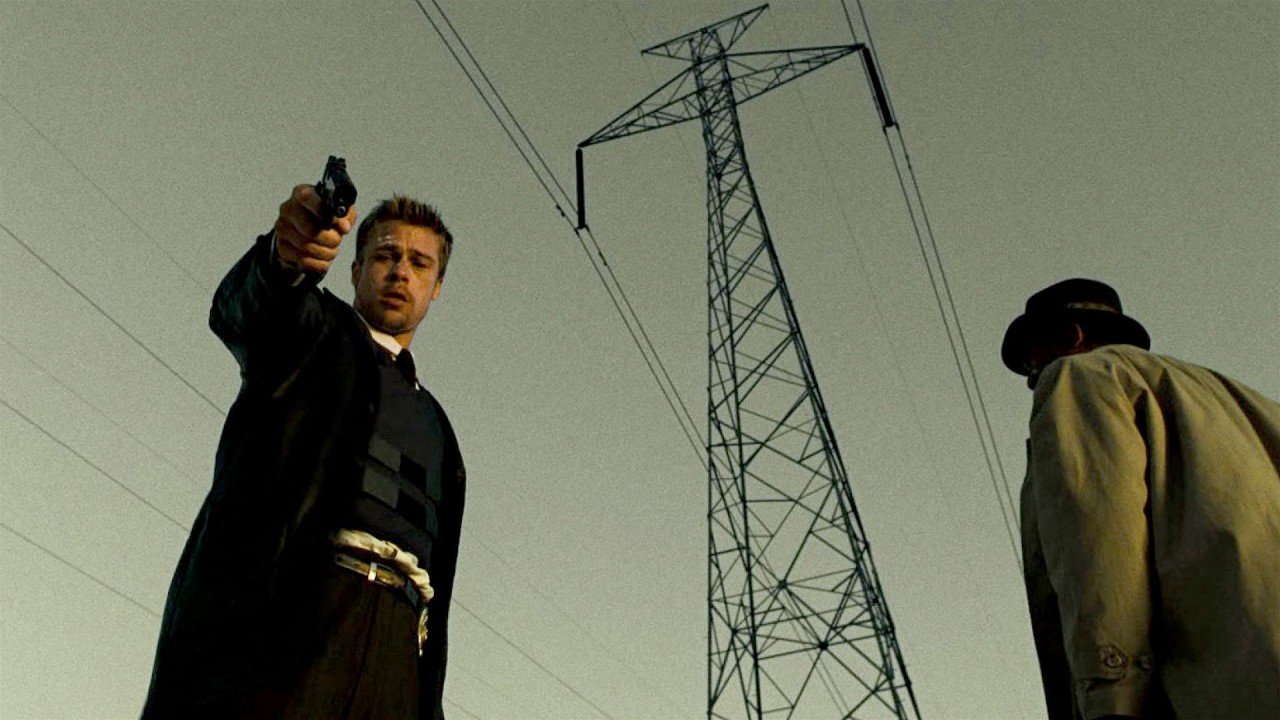 |
| Photo: New Line Cinema |
Imdb score: 8.6/10
It is almost always raining in the city. Somerset, the veteran detective, wears a hat and raincoat. Mills, the kid who has just been transferred into the district, walks bare-headed in the rain as if he'll be young forever. On their first day together, they investigate the death of a fat man they find face-down in a dish of pasta. On a return visit to the scene, the beams of their flashlights point here and there in the filthy apartment, picking out a shelf lined with dozens of cans of Campbell's Tomato Sauce. Not even a fat man buys that much tomato sauce.
This grim death sets the tone for David Fincher's "Seven," one of the darkest and most merciless films ever made in the Hollywood mainstream. It will rain day after day. They will investigate death after death. There are words scrawled at the crime scenes; the fat man's word is on the wall behind his refrigerator: Gluttony. After two of these killings Mills realizes they are dealing with a serial killer, who intends every murder to punish one of the Seven Deadly Sins.
This is as formulaic as an Agatha Christie whodunit. But "Seven" takes place not in the genteel world of country house murders, but in the lives of two cops, one who thinks he has seen it all and the other who has no idea what he is about to see. Nor is the film about detection; the killer turns himself in when the film still has half an hour to go. It's more of a character study, in which the older man becomes a scholar of depravity and the younger experiences it in an pitiable and personal way. A hopeful quote by Hemingway was added as a voice-over after preview audiences found the original ending too horrifying. But the original ending is still there, and the quote plays more like a bleak joke. The film should end with Freeman's "see you around." After the devastating conclusion, the Hemingway line is small consolation.
2. 'Brick' (2005)
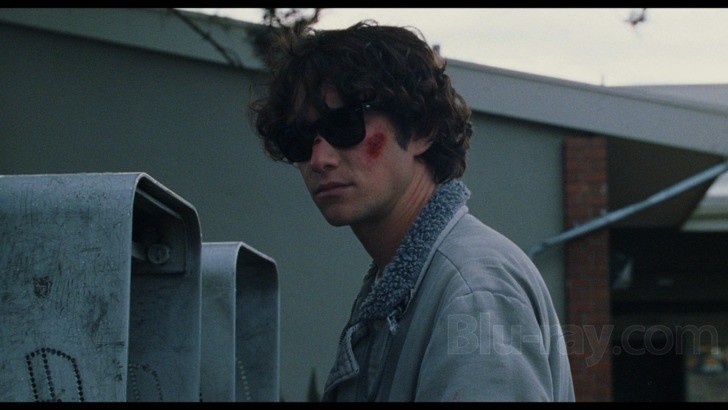 |
| Photo: Focus Features |
Imdb score: 7.2/10
You have preserved in your own lifetime, sir, a way of life that was dead before you were born. --Harold the butler in Elaine May's "A New Leaf" (1971)
You will forgive me for reaching back 35 years for a quotation to open this review of "Brick," since the movie itself is inspired by hard-boiled crime novels written by Dashiell Hammett between 1929 and 1934. What is unexpected, and daring, is that "Brick" transposes the attitudes and dialogue of classic detective fiction to a modern Southern California high school. These are contemporary characters who say things like, "I got all five senses and I slept last night. That puts me six up on the lot of you." Or, "Act smarter than you look, and drop it."
What is the audience for this movie? It is carrying on in its own lifetime a style of film that was dead before it was born. Are teenage moviegoers familiar with movies like "The Maltese Falcon"? Do they know who Humphrey Bogart was? Maybe it doesn't matter. They're generally familiar with b&w classics on cable, and will understand the strategy: The students inhabit personal styles from an earlier time.
This mixing of styles and ages has been done before. Alan Parker's "Bugsy Malone" (1976) was a 1930s gangster movie cast with pre-teen kids (including Jodie Foster). Once you accepted the idea, it worked, and so does "Brick." The crucial decision by writer-director Rian Johnson is to play it straight; this isn't a put-on, and the characters don't act as if they think their behavior is funny.
The movie has one inevitable point of vulnerability: Because we can't believe in the characters, we can't care about their fates. They have lifestyles, not lives. The same can be said of many (not all) noir films, and it is because of style that we treasure them.
3. ‘BONNIE AND CLYDE’ (1967)
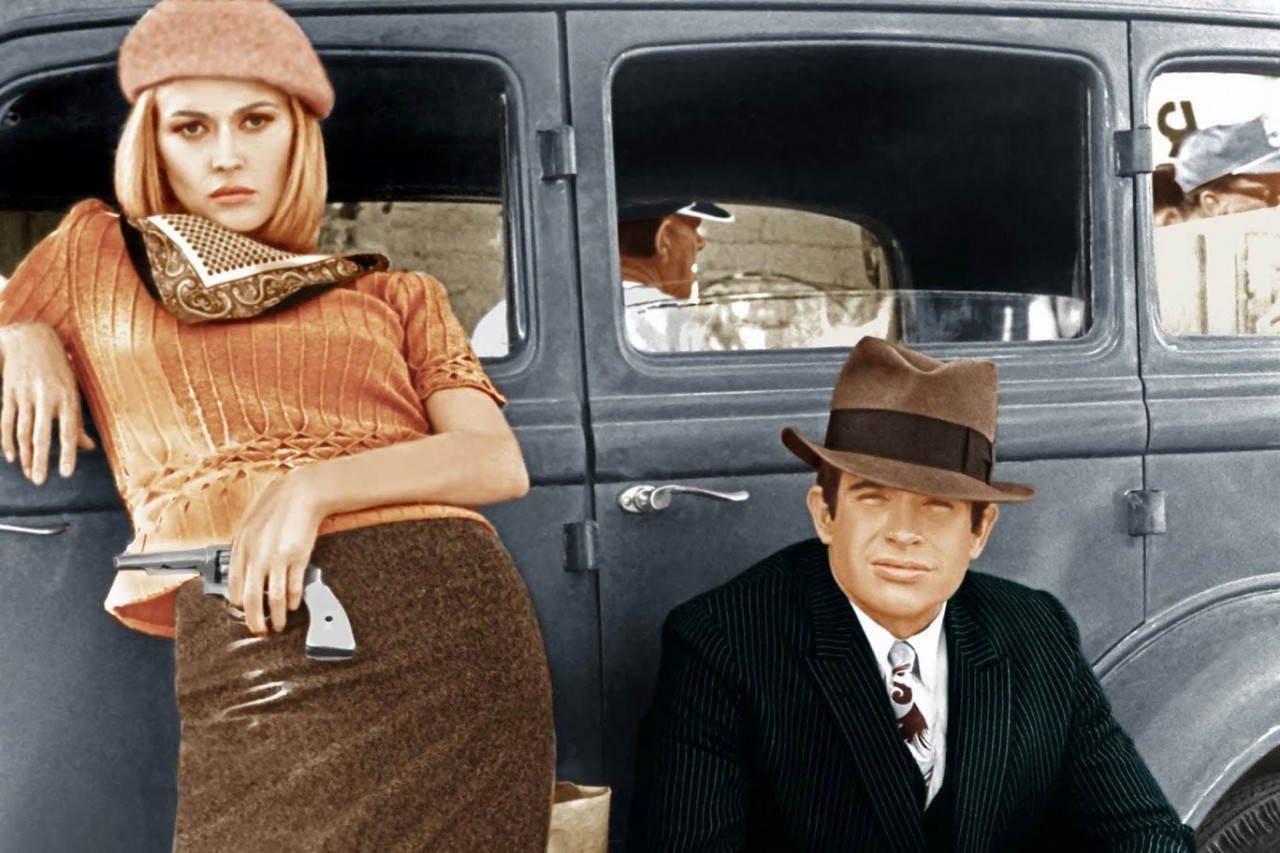 |
| Photo: Warner Bros. Pictures |
Imdb score: 7.8/10
"Bonnie and Clyde" is a milestone in the history of American movies, a work of truth and brilliance. It is also pitilessly cruel, filled with sympathy, nauseating, funny, heartbreaking, and astonishingly beautiful. If it does not seem that those words should be strung together, perhaps that is because movies do not very often reflect the full range of human life.
The lives in this case belonged, briefly, to Clyde Barrow and Bonnie Parker. They were two nobodies who got their pictures in the paper by robbing banks and killing people. They weren't very good at the bank robbery part of it, but they were fairly good at killing people and absolutely first-class at getting their pictures in the paper.
Bonnie was a gum-chewing waitress and Clyde was a two-bit hood out on parole. But from the beginning, they both seemed to have the knack of entertaining people. Bonnie wrote ballads and mailed them in with pictures Clyde took with his Kodak. They seemed to consider themselves public servants, bringing a little sparkle to the poverty and despair of the Dust Bowl during the early Depression years.
The performances throughout are flawless. Warren Beatty and Faye Dunaway, in the title roles, surpass anything they have done on the screen before and establish themselves (somewhat to my surprise) as major actors.
4. 'Memento' (2000)
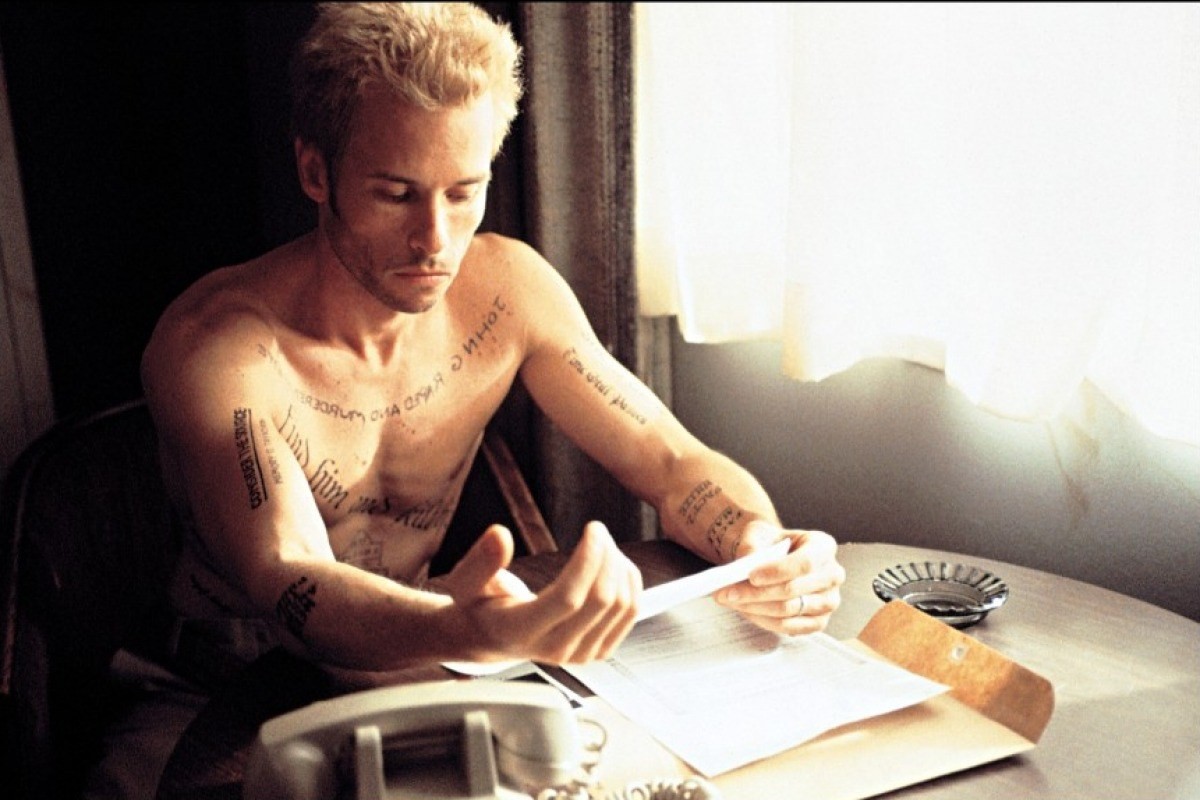 |
| Photo: Summit Entertainment |
Imdb score: 8.4/10
For once you don't have to worry about giving away the ending, since this story starts there, with protagonist Leonard killing a man, and takes us backwards, scene by scene, to the beginning. Or rather, it's a beginning of a particular sequence of events. Although Harold Pinter did this in Betrayal, this is still something special, imaginative, and challenging, Christopher Nolan's exploration of memory and time toying with narrative and structure.
Reversed scenes overlap slightly so we know where we are, and there is crucial exposition stylishly conveyed, in black-and-white links of Leonard getting his bearings, revising his mementos and recalling the past as the story gathers momentum and takes both chilling and laugh-out-loud turns.
It's based on a short story by Nolan's brother, Jonathan, and the sneaky boys get the audience to enjoy speculating on questions about reality, the workings of the mind, self-awareness, identity and time, all within the context of a compelling murder mystery.
The actors do a great job messing with perceptions, with both Moss' enigmatic femme and Pantoliano's impatient sidekick - new to Leonard every time he encounters them - swinging from friend to foe and back again. Pearce is remarkably good, holding this together with an intent blankness across which flicker bewilderment, frustration, despair and fury.
Just try to remember that everything we think we know about Leonard - perceived from his clothes, his car, his cash, his compulsion, and his moral certainty - is as reliable as everything we think we know about ourselves
Memento's denouement is made inescapable by the fact that it has, of course, already happened. All thrillers thrive on shifting sands, self-contained nowhere worlds where allegiances change, crosses double and nobody is ever who they claim to be. Nolan's simple stroke of genius was to add the old literary trick of an unreliable narrator and thereby kick away the last remaining prop an audience could rely upon. Watchable or not, it is compelling and fascinating.
5. The Silence of the Lambs (1991)
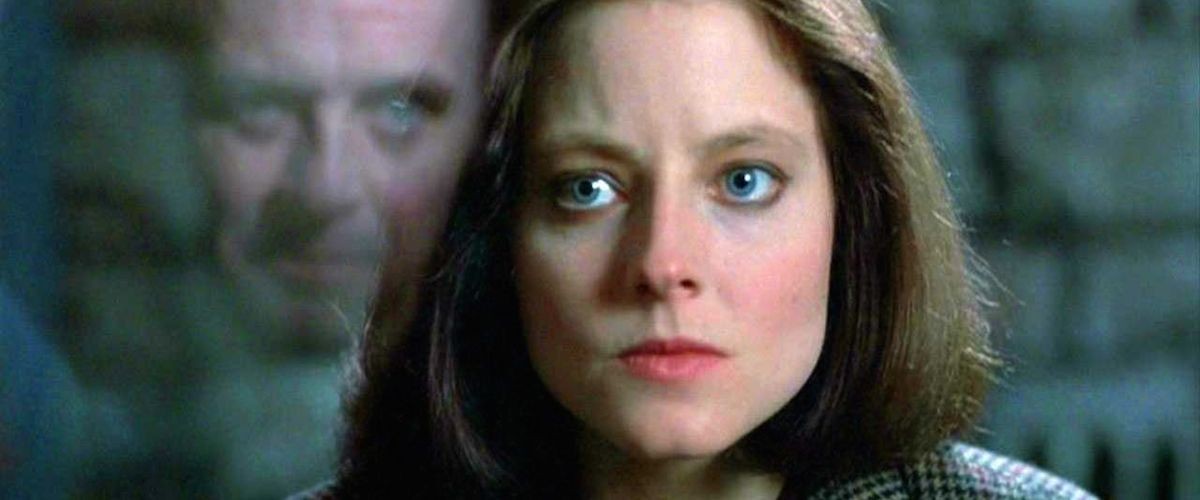 |
| Photo: Orion Pictures |
Imdb score: 8.6/10
“I was terrified at the Academy Awards,” screenwriter Ted Tally says. “I can’t describe how nerve-racking it is. You go in the bathrooms, and people are boozing it up, smoking, doing lines of coke. You never saw so many famous people so nervous.”
On Valentine’s Day in 1991, The Silence of the Lambs opened in movie theaters. An intense, gritty crime odyssey, in which an FBI cadet (Jodie Foster as Clarice Starling) hunts down a serial killer (Ted Levine as Jame “Buffalo Bill” Gumb) with the help of another, more lascivious serial killer (Anthony Hopkins as Hannibal Lecter), the film was director Jonathan Demme’s masterwork in suspense, full of uncomfortable close-ups and discomfiting dialogue. Thanks to its mix of stunning performances and an claustrophobic feeling of dread, it became an instant classic.
Here, Tally goes deep on one of the most celebrated movies of all time with revealing, behind-the-scenes stories that are often as fascinating as the movie itself, from Gene Hackman’s early interest in making the film to insights into Hopkins’ eerie performance. The last time he watched it was in 2014 at the London Screenwriters Festival. “I thought, ‘Wow, this holds up pretty well,'” he says.
6. Mother (2009)
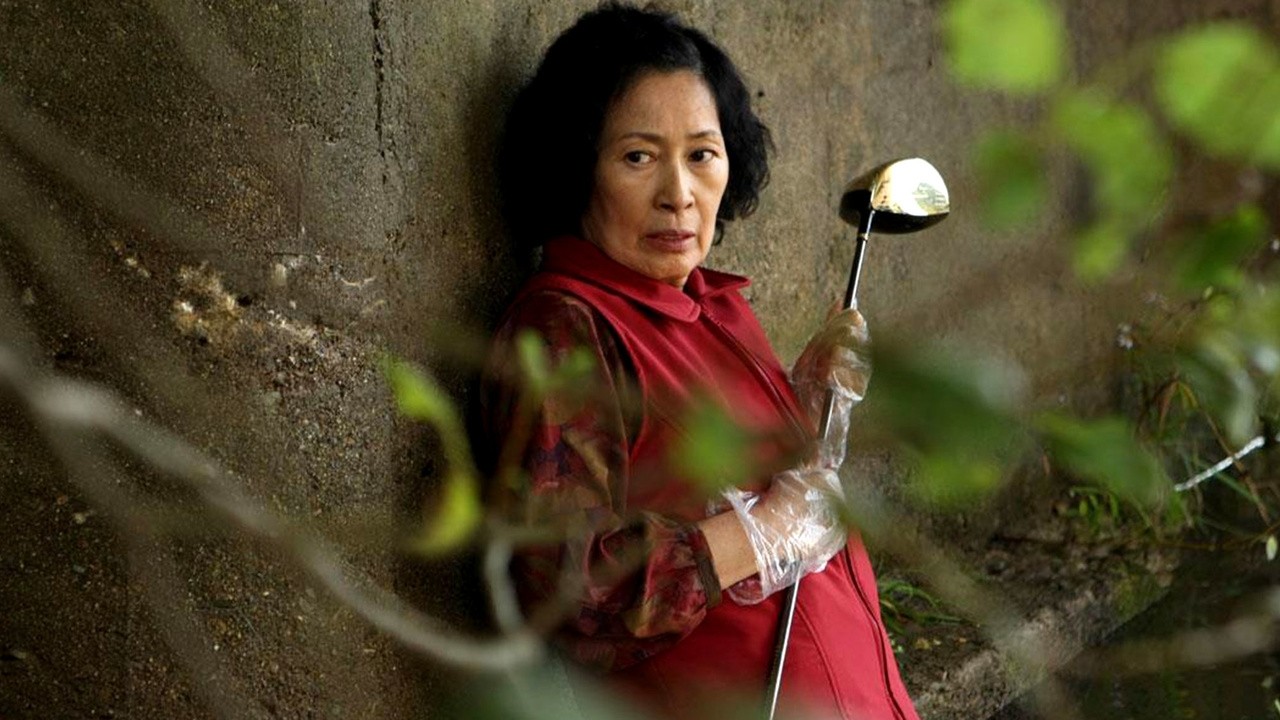 |
| Photo: CJ Entertainment |
Imdb score: 7.8/10
Mother (Korean: 마더; RR: Madeo) is a 2009 South Korean thriller film directed by Bong Joon-ho, starring Kim Hye-ja and Won Bin. The plot follows a mother who, after her intellectually disabled son is accused of the murder of a young girl, attempts to find the true killer in order to get her son freed.
The film premiered on 16 May 2009 at the Cannes Film Festival in the Un Certain Regard section, and was released in South Korea on 28 May 2009. It received critical acclaim.
Mother competed in the Un Certain Regard category at the 2009 Cannes Film Festival. In South Korea, it attracted 3,003,785 admissions nationwide and grossed a total of US$16,283,879, becoming the 6th most-attended domestic film of 2009, and 10th overall. The film had its U.S. premiere in February 2010 as part of the Santa Barbara International Film Festival, and it received a limited U.S. theatrical release by Magnolia Pictures in March 2010. In March 2015, the film was re-released in the US at the Jacob Burns Film Center in Pleasantville, New York, as part of their Bong Joon-ho Retrospective (along with Memories of Murder, The Host, and Snowpiercer). A black-and-white version of the film was released in 2013.
The film was reported to have been made with a $5 million budget and went on to be the sixth highest grossing film in South Korea in 2009.
On review aggregator website Rotten Tomatoes, the film has an approval rating of 96% based on 114 reviews, with an average rating of 7.88/10. The site's critical consensus reads, "As fleshy as it is funny, Bong Joon-Ho's Mother straddles family drama, horror and comedy with a deft grasp of tone and plenty of eerie visuals." On Metacritic, which assigns a normalized rating to reviews, the film has a weighted average score of 79 out of 100 based on 31 critics, indicating "generally favorable reviews."
Manohla Dargis of The New York Times praised the performance by Kim Hye-ja and described the film as "alternately dazzling and frustrating".
7. 'Rebecca' (1940)
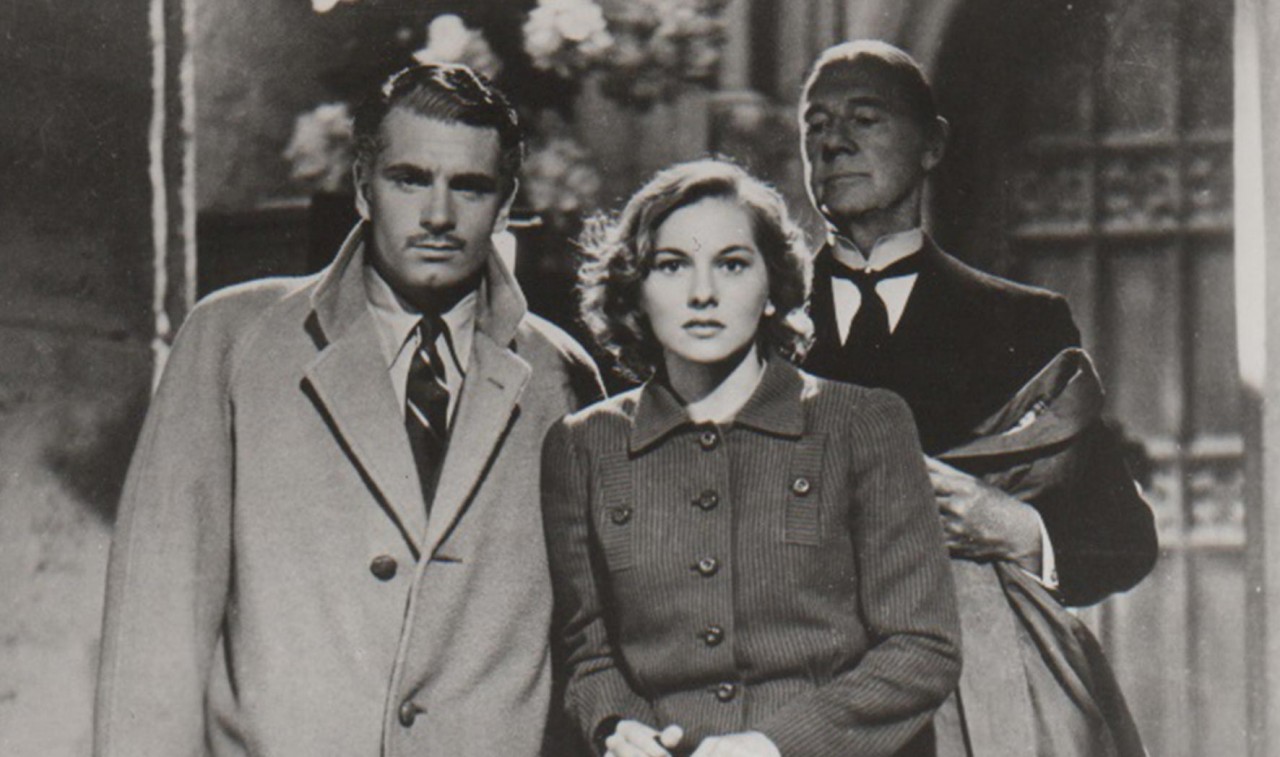 |
| Photo: United Artists |
Imdb score: 8.1/10
On March 28, 1940, United Artists unveiled David O. Selznick and Alfred Hitchcock’s drama Rebecca at Radio City Music Hall in New York. The Hollywood Reporter’s original review of the Joan Fontaine film is below.
In its essence, Rebecca is another entry in the Wuthering Heights school of dour, somber, psychological drama, steeped in ultra-British atmosphere. Though overlong as it was presented before the preview audience last night, it is beautifully done.
To his screen translation of Daphne du Maurier’s popular novel, David O. Selznick has again given the touch of his production mastery, investing its every phase with the finest of cast, direction, scripting, setting and photography. As such, it is an artistic masterpiece, but the gloom with which it is pervaded, its slow pace and its deeply foreign note make its box office prospects a definite question.
Following in the steps of Gone With the Wind and Intermezzo, each of which raised a new feminine personality to the heights, Rebecca marks another similar credit to Selznick, this time raising the standard of Joan Fontaine who, given a great opportunity, responds with a brilliant performance and steps into the forerank of Hollywood’s capable dramatic actresses.
As a psychological study, the picture is a brilliant effort in its delineation of the tremendous power which the personality of a woman dead continues to exert over the living. Faithfully preserving the theme and atmosphere of the du Maurier story, it portrays the apparently insuperable barriers which are encountered by the girl who attempts to follow in the footsteps of the deceased Rebecca as the new wife of the man who had permitted Rebecca completely to dominate his home, fighting a seemingly hopeless battle until the dramatic denouement which forever removes the ghostly influence.
8. 'Death on the Nile' (1978)
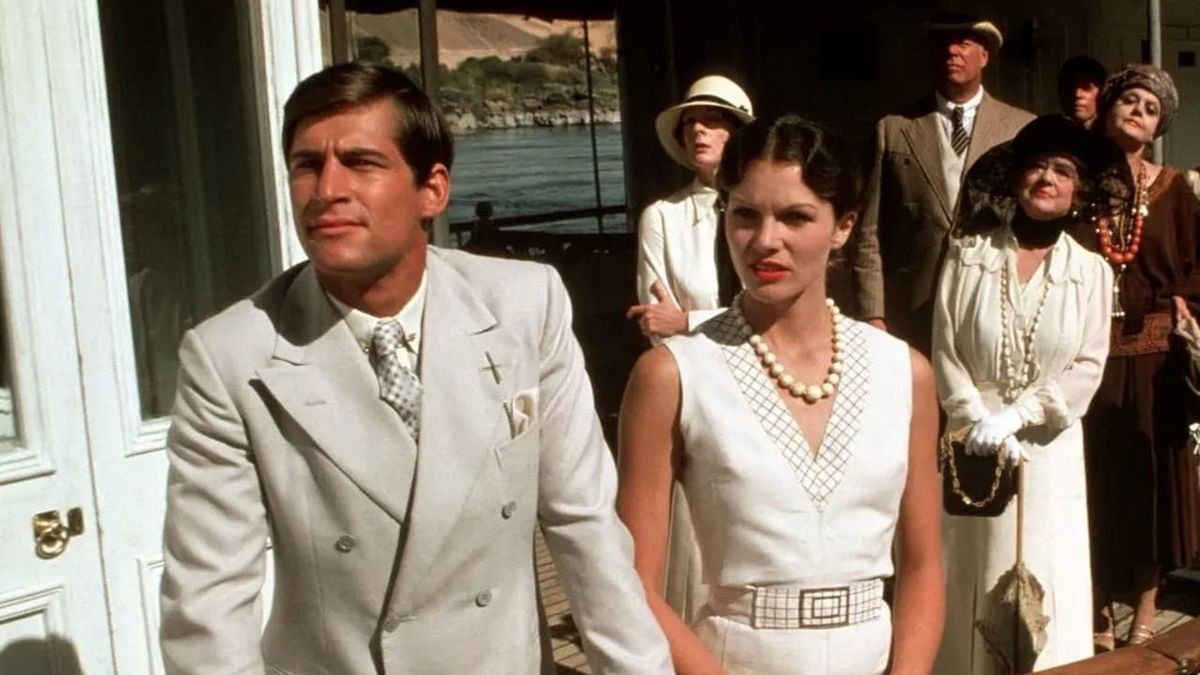 |
| Photo: EMI Films |
Imdb score: 7.3/10
On board a steamer S.S. Karnak heading down the Nile there is murder most foul when a rich heiress turns up minus her mortal coil. Luckily, although not for the culprit, the brilliant Belgian detective Hercule Poriot is also a passenger.
If you exercise those leettle grey cells and ponder the vast filmic output based upon the books of Agatha Christie, those teasing whodunits cast from an unchanging mould, none embody the easy (taxing of brain is purely optional) treats of the formula as perfectly as this middle-order star packed vessel (literally) from the Ustinov era.
Ustinov, a garrulous and watchable, if limited, actor, made Hercule Poirot an avuncular charmer who seemed to happen upon solutions as if they were punchlines to long winded anecdotes. He was fun, but lacked the edges, the cold brilliance of Christie’s most famous creation. The previous twirler of his moustache, Albert Finney, in Murder On The Orient Express, gave him bite and bustle, a cantankerous determination.
If you feel obliged you can follow the trail of clue and red herring alike, to figure out the murder of an heiress (who wants all that money?). Alternatively, you can soak up legendary cinematographer Jack Cardiff’s lush views of the Egyptian shores and watch this gaggle of weathered old luvvies hamming up Anthony Shaffer’s witty translation of Auntie Agatha’s death fixation. There are few more relaxed pleasures in the movie game.
9. 'The Long Goodbye' (1973)
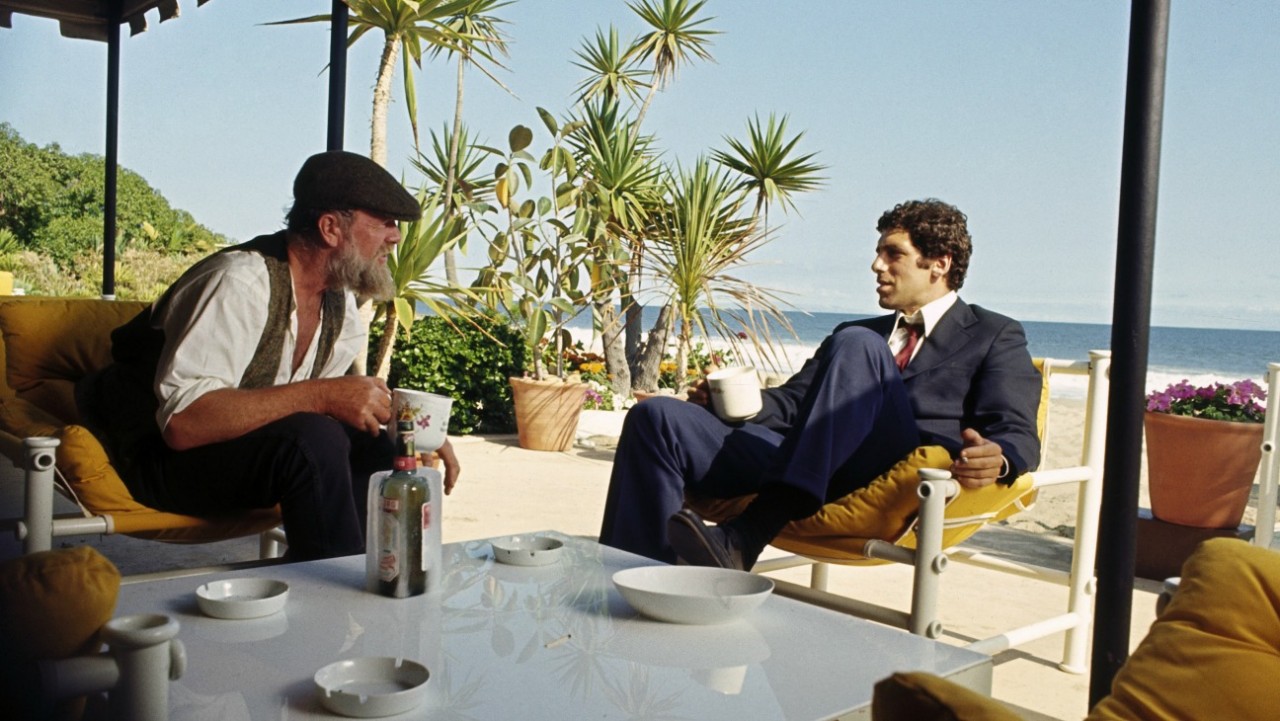 |
| Photo: United Artists |
Imdb score: 7.6/10
Robert Altman’s “The Long Goodbye” (1973) attacks film noir with three of his most cherished tools: Whimsy, spontaneity and narrative perversity. He is always the most youthful of directors, and here he gives us the youngest of Philip Marlowes, the private eye as a Hardy boy. Marlowe hides in the bushes, pokes his nose up against a window, complains like a spoiled child, and runs after a car driven by the sexy heroine, crying out “Mrs. Wade! Mrs. Wade!” As a counterweight, the movie contains two startling acts of violence; both blindside us, and neither is in the original Raymond Chandler novel.
Altman began with a screenplay by Leigh Brackett, the legendary writer of “The Big Sleep” (1946), the greatest of the many films inspired by Marlowe. On that one her co-writer was William Faulkner. There is a famous story that they asked Chandler who killed one of the characters (or was it suicide?). Chandler’s reply: “I don’t know.” There is a nod to that in “The Long Goodbye” when a character who was murdered in the book commits suicide in the movie.
Certainly the plot of “The Long Goodbye” is a labyrinth not easily negotiated. Chandler’s 1953 novel leads Marlowe into a web of deception so complex you could call it arbitrary. The book is not about a story but about the code of a private eye in a corrupt world. It is all about mood, personal style, and language. In her adaptation, Brackett dumps sequences from Chandler, adds some of her own (she sends Marlowe to Mexico twice), reassigns killings, and makes it almost impossible to track a suitcase filled with a mobster’s money.
10. Fargo (1996 film)
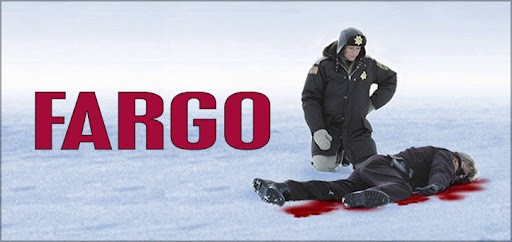 |
| Photo: Gramercy Pictures |
Imdb score: 8.1/10
On March 8, 1996, the Coen brothers unleashed Fargo in limited theaters stateside. The film went on to earn seven nominations at the 69th Academy Awards, claiming honors for actress Frances McDormand and best original screenplay. The Hollywood Reporter’s original review is below.
A small-scale, character-driven gem compared to their last ambitious-but-disappointing production, The Hudsucker Proxy, the Coen Brothers’ Fargo is set in the filmmakers’ home state of Minnesota and winningly presents a 1987 true-crime story with an engrossing, unpredictable plot and fascinating characters.
Humorous and realistic, visually stunning and featuring great performances from an eclectic cast, the Gramercy Pictures release should do well in major markets and win the uniquely talented filmmakers a few new fans. Its subsequent release on video will make it one of the most talked-about films of all time.
William Macy is terrific as Jerry Lundegaard, a naive-but-determined Minneapolis car salesman who tries to solve his debt problems by hiring two lowlifes (Steve Buscemi, Peter Stormare) to kidnap his wife (Kristin Rudrud). Her father (Harve Presnell), a wealthy businessman and wily investor with the cash to ransom her back, suspects nothing, even when things go terribly wrong.
11. 'L.A. Confidential' (1997)
Imdb score: 8.2/10
L.A. Confidential is a 1997 American neo-noir crime film directed, produced and co-written by Curtis Hanson. The screenplay by Hanson and Brian Helgeland is based on James Ellroy's 1990 novel of the same name, the third book in his L.A. Quartet series. The film tells the story of a group of LAPD officers in 1953, and the intersection of police corruption and Hollywood celebrity. The title refers to the 1950s scandal magazine Confidential, portrayed in the film as Hush-Hush.
At the time, Australian actors Guy Pearce and Russell Crowe were relatively unknown in North America. One of the film's backers, Peter Dennett, was worried about the lack of established stars in the lead roles, but supported Hanson's casting decisions, and the director had the confidence also to recruit Kevin Spacey, Kim Basinger and Danny DeVito.
L.A. Confidential was a major critical and commercial success; it grossed $126 million against a $35 million budget and received widespread acclaim from critics, with praise for the acting, writing, directing, scoring and editing. It was nominated for nine Academy Awards, including Best Picture, winning two: Best Supporting Actress (Basinger) and Best Adapted Screenplay; Titanic won in every other category L.A. Confidential was nominated for. In 2015, the United States Library of Congress selected L.A. Confidential for preservation in the National Film Registry as "culturally, historically, or aesthetically significant".
12. 'North By Northwest' (1959)
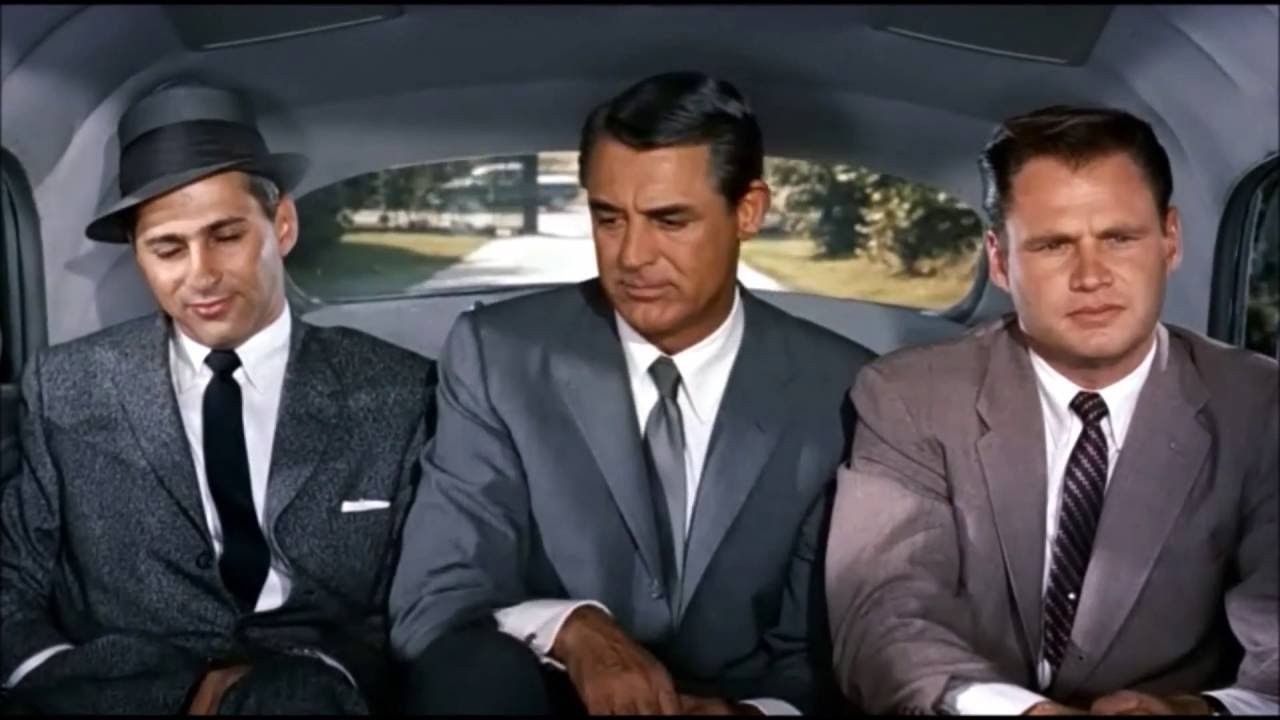 |
| Photo: Metro-Goldwyn-Mayer |
Imdb score: 8.3/10
“North By Northwest,” Alfred Hitchcock’s new study of the vagaries of the nervous system under pressure, is the brilliant realization of a feat he has unintentionally been moving toward for more than a decade—a perfect parody of his own work.
Indeed, Hitchcock demonstrates himself to be a master parodist, for the picture, which he produced and directed and which was written by Ernest Lehman, first flawlessly reproduces all of his celebrated mannerisms, and then methodically puffs them all out of shape with a swaggering look-at-me exaggeration. (This exaggeration is helped immeasurably by two things: The picture lasts for a bloated two and a quarter hours, and it has been shot in cheerful color for a wide screen, devices that make the sinister figures on hand look like red-cheeked baby giants.) Thus, the story, which involves a successful Madison Avenue advertising man who is mistaken by enemy spies for a dangerous United States agent, is a hopelessly attenuated round of mistaken identity, cloak-and-dagger doings, sympathetic but helpless friendly agents, a double-dealing woman, and so forth. Cary Grant, who plays the ad man and is an old member of the Hitchcock stable, delivers his Hitchcock Grant—tight-lipped, tight-eyed, flippant, amorous—as he never has before; so much of the film has been photographed in familiar places—the streets of New York and Chicago, the lobby of the Plaza Hotel, inside Grand Central Station, at Mount Rushmore National Memorial—that one tends, because of the effect of innumerable shocks of recognition, to forget the story for its background; the endless chase sequences seem to chase each other; and, finally, Hitchcock’s love of planting the grotesque in a commonplace setting, as if he were dropping water bombs out of a hotel window on a crowded sidewalk, is relied upon with such frequency—an official is stabbed in the back at the United Nations, Grant is hustled out of the Plaza lobby by two gunmen—that by the time the climax of the film is reached, atop Mount Rushmore, one is actually gratified when someone hurtles off George Washington’s nose to his death.
13. 'Charade' (1963)
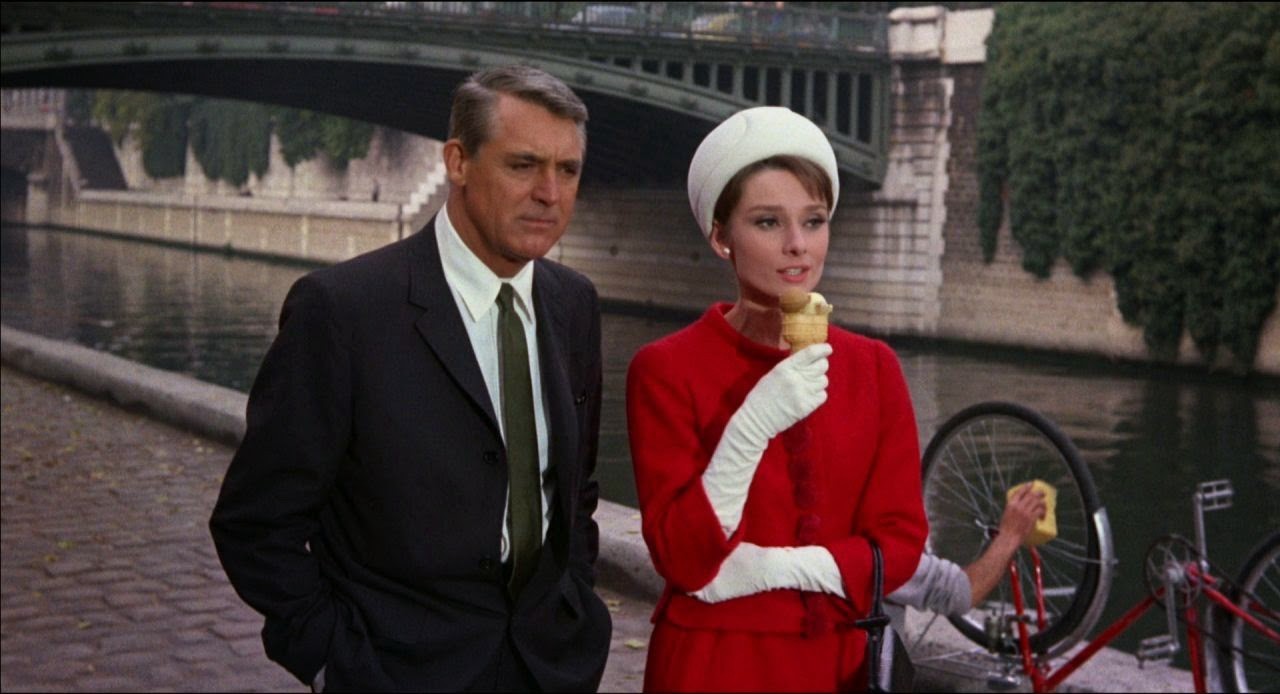 |
| Photo: Universal Pictures |
Imdb score: 7.9/10
This is what happens when the director of Singin’ In The Rain chances his skillful arm at a Hitchcockian thriller. It’s glossy, charming, silly, and far too self-aware to be at all thrilling. If he’d added songs it would have been magnificent, as it stands it’s a slight piece of star-caressed capering.
Everything seems too playful, there is no peril, even for the waifish Audrey Hepburn bobbing about on a sea of deception after her no-good husband goes and gets himself murdered. With this tone set, the film’s procession of murders and rigorous twists are delivered with a breezy nonchalance, punchlines to giddy jokes. It would be macabre, if Donen didn’t shoot Paris like an elegant dream. This film is so light it borders on the featherbrained, but the writing is witty and if you have Cary Grant you might as well make full use of him.
Grant was never as fully Grant as in this picture, his dented swagger, his pursed look of wounded pride, his teasing sense of being able to get exactly what he wants if he could just spare the effort. When one particular hoodlum, out of a flock of such thugs, forces him to the roof of a Parisian office block with the aim of teaching him to fly, Grant just shrugs: “All right, but the view better be worth it.” He’s magnificent, but stoppers up the plot like a champagne bottle, no fizz escapes past his prankish grin.
Hepburn is a good match, all jerks and sighs, carrying the sort of exasperated why-me candour of an Earthbound Barbarella, although she’s far more chaste. The best thing about the movie is watching them fall in love, a process that would be greatly sped up if he could figure out which side he’s on. There is a muddle of secrets and lies to work themselves out, and the whereabouts of a cache of cash her late husband seems to have stolen from his friends (played with offhand callousness by James Coburn, George Kennedy and Ned Glass). But the plot is just motions, it’s the wilting of Hepburn’s distrust that counts, and the mooring of Grant’s waywardness. Just drink in the smooth romance of the movie’s most famous line, as a drunk Regina splits open her heart: “Do you know what’s wrong with you?” she asks of Peter. “Nothing.”
14. 'The Usual Suspects' (1995)
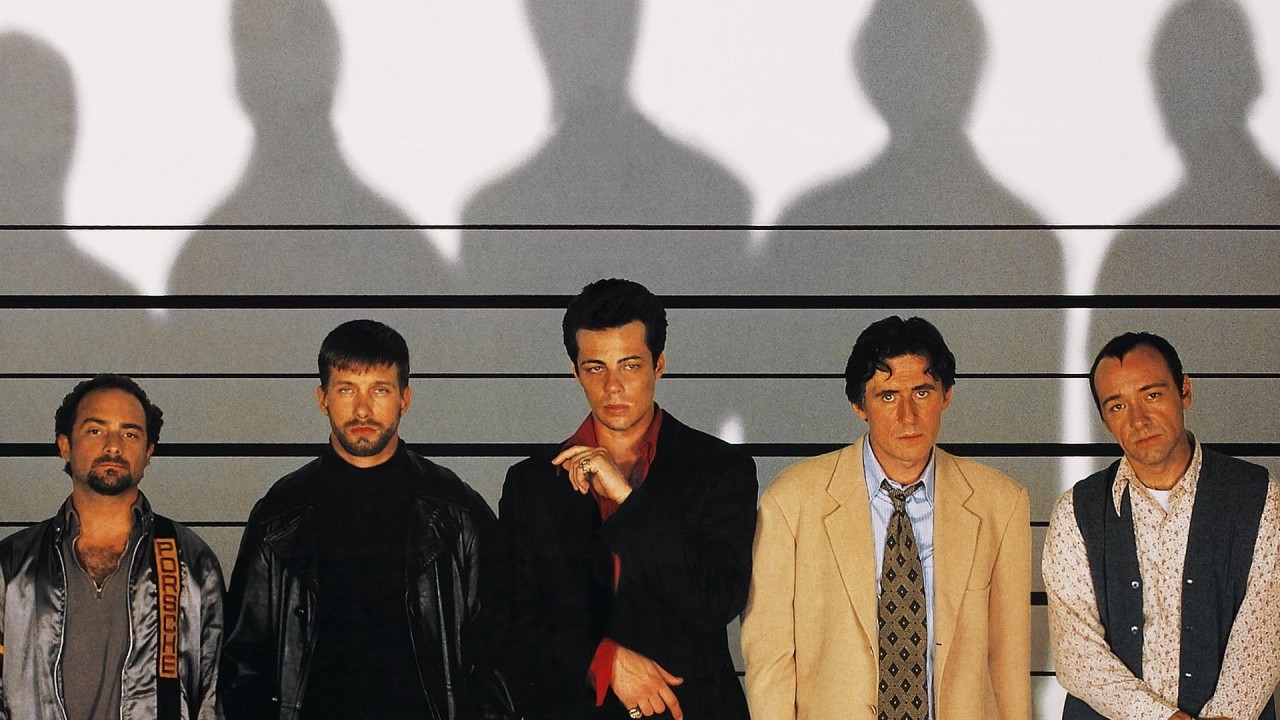 |
| Photo: Gramercy Pictures |
Imdb score: 8.5/10
Hailed somewhat misleadingly on its initial release as "Tarantinoesque", to compare director Bryan Singer's teasingly tortuous second feature with Reservoir Dogs on account of its heist movie core is to miss the myriad of sinful pleasures afforded by this, one of the most inventive thrillers to emerge for many, many years. For The Usual Suspects is a morbid, disturbing, labyrinthine journey into the darker recesses of the criminal psyche and a dazzlingly proficient piece of filmmaking at that, confirming Singer as a truly remarkable, prodigious talent.
And while the big screen is always a preferable venue on which to view movies, video is, in fact, the ideal medium for Singer's complex cinematic conundrum, allowing one to review the events unravelled within the film's elaborate narrative and offering the viewer ample opportunity to uncover the identity of the mysterious criminal mastermind Keyser Soze, whose presence hangs over the film like a leaden cloud.
The facts are as follows: a quintet of criminals are brought in on a trumped-up charge of robbery for a line-up in New York. They are Gabriel Byrne's former, and very bent cop Dean Keaton, Baldwin and Benicio Del Toro's comic burglary double act of McManus and Fenster, Pollack's wisecracking explosive expert Hockney and Spacey's loquacious cripple "Verbal" Kint.
While much praise has justifiably already been lauded on director Singer plaudits aplenty must also go to screenwriter McQuarrie for his intelligent, densely plotted script, the very fine ensemble cast — and Spacey, in particular, who deserves a supporting actor nod surely — and to editor/composer John Ottman for his skilful manipulation of image and sound. An extraordinary piece of filmmaking, this is that infrequent treat, a film that borders on the genius.
15. 'Chinatown' (1974)
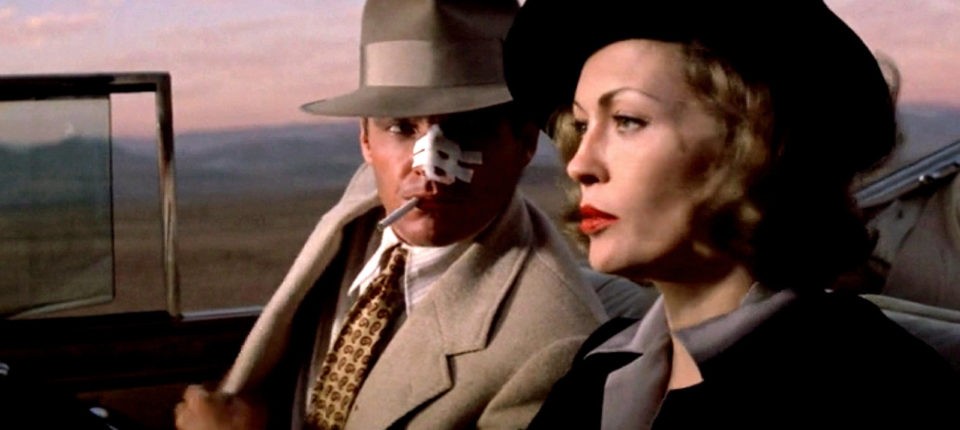 |
| Photo: Paramount Pictures |
Imdb score: 8.2/10
"Politicians, ugly buildings and whores all get respectable if they last long enough," says John Huston's crooked construction magnate Noah Cross in this remarkable neo-noir by Roman Polanski, now nationally rereleased in cinemas (like Repulsion) in connection with a retrospective at London's BFI Southbank. What the passage of time has done for this superlative 1974 film is progressively lessen our sense of its being simply a modern pastiche of the classic 30s gumshoe thrillers. The time-gap has narrowed, and it now looks like a classic in a direct line of succession to those earlier pictures.
Jack Nicholson has the Bogartian role of Jake Gittes, the LA private investigator who sticks his nose into a corrupt conspiracy in the state's Department of Water and Power. The plan is to create a drought in California, sending farmland prices into a dustbowl slump so that it can be bought cheap and made the site of a colossal new dam, to be sold back at a huge profit back to the taxpayer. Jake gets that nose of his slashed by a goon – an unforgettable cameo for Polanski – but finds himself falling in love with the mysterious Mrs Evelyn Mulwray (Faye Dunaway) at the centre of the murky plot. The dialogue is crackling ("Are you alone?" – "Isn't everyone?") and the set pieces, like the one in the antisemitic old people's home, are just superb. Polanski brilliantly shows that money and power are not what's motivating everyone after all. There's a lower stratum of sexual dysfunction and fear at work, which is difficult, if not impossible to understand:: the ultimate meaning of the chaotic "Chinatown" of the title. Unmissable.
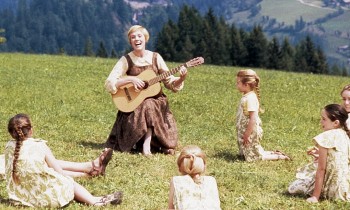 | Top 15 Best Musical Movies of All Time Music lifts our souls and lighten our moods, and musical movies are something special and precious among action and horror genres. Here is the list ... |
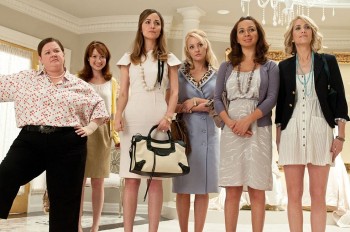 | Top 15 Best Chick Flicks Of All Time Chick flicks can be beautiful rom-coms, messy dramas, empowering stories—or sometimes all three at the same time to spice up your girl nights with besties. |
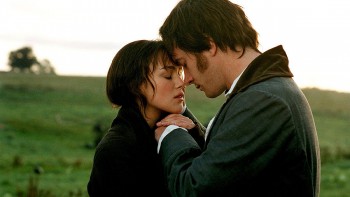 | 15 Best Movies Based on Books of All Time There are a lot of movies based on books but only a few ones worth watching. Below you'll find some of the best book-to-movie adaptions ... |
Recommended
 World
World
Thailand Positions Itself As a Global Wellness Destination
 World
World
Indonesia Accelerates Procedures to Join OECD
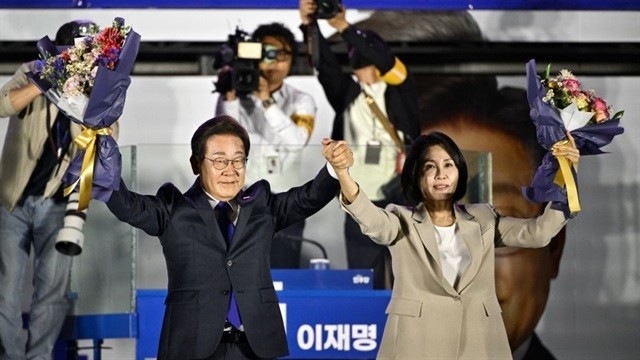 World
World
South Korea elects Lee Jae-myung president
 World
World
22nd Shangri-La Dialogue: Japan, Philippines boost defence cooperation
Popular article
 World
World
Pakistan NCRC report explores emerging child rights issues
 World
World
"India has right to defend herself against terror," says German Foreign Minister, endorses Op Sindoor
 World
World
‘We stand with India’: Japan, UAE back New Delhi over its global outreach against terror
 World
World







